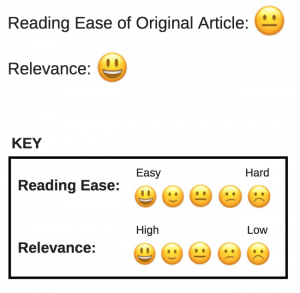This past May, the Southeast Michigan chapter of JDRF held their annual TypeOneNation Summit.
 This summit includes an all-day event for teens, called Teen Central. Michigan State University MyT1D Hero researchers held a writer’s workshop during the Teen Central Event. These teens were asked to share their type 1 diabetes stories to be highlighted on this blog!
This summit includes an all-day event for teens, called Teen Central. Michigan State University MyT1D Hero researchers held a writer’s workshop during the Teen Central Event. These teens were asked to share their type 1 diabetes stories to be highlighted on this blog!
Here are their heartfelt comments and stories:
My Advice to Parents
By: Maximilian
Living with Type 1 Diabetes is hard on any family. The new lifestyle can be overwhelming: learning how to give shots, learning how to feel when you have a low and learning everything else there is about diabetes.
Parents are trying to help us cope with diabetes by asking questions like “How’s your sugar?”, “Did you give insulin for everything you eat?” or “Why do you have a high blood sugar?” As a child grows, they don’t need to be asked constantly about it especially when they are in their teens. Once someone becomes a teen, they are slowly realizing the importance of good management and are becoming more responsible about it. If they are asked about it constantly, they start to get irritated. Parents should decrease the amount questions asked but every once in a while parents should ask their child questions about their diabetes. Also, kids should take more and more responsibility with their diabetes as they get older.
If they are newly diagnosed with Type 1 Diabetes when they are young, then parents should ask the questions constantly because children at a young age still don’t comprehend everything about diabetes. So, my advice is: parents continue with everything you are doing but once a child goes into their teens, decrease the questions because they have to take responsibility and parents aren’t always going to be around to help them.
T1D Kids Are Normal Too
By: Griffin
My name is Griffin and I have type 1 diabetes. Type 1 diabetes is hard, and if there is one thing I want the world to know about diabetes it would be that kids with diabetes are normal just like everybody else. We just have to do a little extra work to be healthy.
Take the Time to Listen
By: Isaac
The thing that I dislike about type 1 diabetes is that everyone thinks they know everything about diabetes, but they don’t because everyone is different. 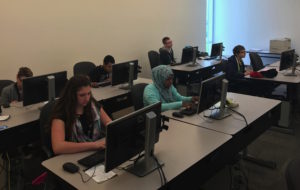 It makes it very difficult for teens to do what we like to do. For example: eating brownies. People think that we aren’t allowed to have sugar and that we aren’t allowed to eat food because pretty much everything has carbs. Some people try to be nice and get you sugar free chocolate but chocolate should melt when warm or it’s not edible and I really just want the brownie. I wish that people would take the time to listen to what you have to say instead of just assuming what you can and can’t have. You can have anything that you want as long as you correct for it. That’s what angers me is that people don’t take the time to listen to what you have to say and think they know what’s best for you.
It makes it very difficult for teens to do what we like to do. For example: eating brownies. People think that we aren’t allowed to have sugar and that we aren’t allowed to eat food because pretty much everything has carbs. Some people try to be nice and get you sugar free chocolate but chocolate should melt when warm or it’s not edible and I really just want the brownie. I wish that people would take the time to listen to what you have to say instead of just assuming what you can and can’t have. You can have anything that you want as long as you correct for it. That’s what angers me is that people don’t take the time to listen to what you have to say and think they know what’s best for you.
Full of Hope for a Cure
By: Kate
It all started in June. You know that feeling when your stomach is hurting like crazy. Well that’s what I felt. I was sitting in my room watching Once Upon a Time, and then I just felt like throwing up. I told my mom, she said I was fine. I believed her. Later on during the day, I went to use the bathroom, and guess what, I was pooping green stuff. I was like what… Then the next day my mom took me to the doctor. My doctor came back with the horrifying news, I had type 1 diabetes. I was admitted to the hospital for 3 days. At the time, I didn’t know what diabetes was, but I knew something was wrong. I remember crying. From that moment on, I knew my life had changed forever.
When I told my best friend I had diabetes, she was chill. She told me her mom had prediabetes. So I figured she knew what I was going through. At the time she was in private school and I was in homeschool so I had no clue what was going on in school. Later on when I saw her, I found out that half the school knew I had it. I was embarrassed.
I’m in private school now. I have now explained my condition to my other friends. Whenever I have low sugar or high sugar, they always help me out. I have a typical normal 7th grade life now. As any teenager, I have a crush, bullies, and best friends. I am happy to say I am just like any teenager in the world. Just full of hope for a cure.
I am the Brother of Someone with T1D
By: Anonymous
My brother was diagnosed about 9 months ago, and when I first found out I was really scared. Frankly, I was freaking out, but when Isaac needed help with his blood sugar, I went over and told him it was alright. Isaac was also scared but as his brother, I needed to help him.
Be Open and Compassionate to Others
By: Kathryn
I will have had diabetes for five years. I was 9 years old when I was diagnosed, and had no prior knowledge about T1D. I have many family members with type 2, but type 1 was a whole new world. After nine days in the hospital, and many “training sessions” with nurses and doctors, I understood how to care for myself and my blood sugars properly. Little did I know, there was still a whole road ahead, and a long one at that. Diabetes is a very personal issue, and what I mean by that is, there is no “normal” for T1D patients. You can’t make general statements about treatments, diagnosis stories, or any of our battles.
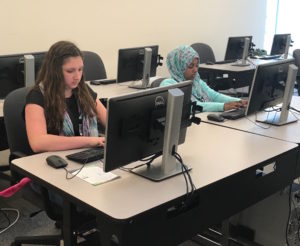 For me, low blood sugars are an extremely rare problem. I eat pretty healthy for an almost 14-year-old girl, I exercise pretty well, I bolus for all my carbs, and do correction boluses for any numbers over my target range. I get lots of activity; taking care of two horses every day, running with my dog, and in the summer I ride multiple horses almost every day at a training farm, so I’m in good shape. Yet, my numbers are still high. I recently switched to a pump, which has helped, but not as much as I had hoped. Every day I still struggle to keep my numbers down. The point I’m trying to make is that everyone has struggles with their diabetes. Don’t say, “Well you’re supposed to do this”, or, “You shouldn’t do that.” We are all so different, and I think this is something the world needs to realize. Not only the friends, families, and team-members of people with type 1 diabetes, but the people with diabetes themselves. Don’t look down on others because of how they’re treating their diabetes, instead learn from it. How they are taking care of their numbers may not work for you, but still learn from it. Learn how they work differently than you do. If you participate in track and field, you talk to other people (coaches, team-mates, ect.) about how they are successful in their events, and it helps you become a better athlete. Do the same with your diabetes. Share stories and openly talk with others about your experiences. As T1D patients, we’re all stuck in the same boat, and all the questions, worry, uncertainty, pressure, and mental and physical pains that come with this disease try to sink that boat. But we can rise above it much easier if we all hold each other up.
For me, low blood sugars are an extremely rare problem. I eat pretty healthy for an almost 14-year-old girl, I exercise pretty well, I bolus for all my carbs, and do correction boluses for any numbers over my target range. I get lots of activity; taking care of two horses every day, running with my dog, and in the summer I ride multiple horses almost every day at a training farm, so I’m in good shape. Yet, my numbers are still high. I recently switched to a pump, which has helped, but not as much as I had hoped. Every day I still struggle to keep my numbers down. The point I’m trying to make is that everyone has struggles with their diabetes. Don’t say, “Well you’re supposed to do this”, or, “You shouldn’t do that.” We are all so different, and I think this is something the world needs to realize. Not only the friends, families, and team-members of people with type 1 diabetes, but the people with diabetes themselves. Don’t look down on others because of how they’re treating their diabetes, instead learn from it. How they are taking care of their numbers may not work for you, but still learn from it. Learn how they work differently than you do. If you participate in track and field, you talk to other people (coaches, team-mates, ect.) about how they are successful in their events, and it helps you become a better athlete. Do the same with your diabetes. Share stories and openly talk with others about your experiences. As T1D patients, we’re all stuck in the same boat, and all the questions, worry, uncertainty, pressure, and mental and physical pains that come with this disease try to sink that boat. But we can rise above it much easier if we all hold each other up.
Reaching out to others can be scary if you’re shy or new to diabetes, or even if you’re a confident, independent person who has had T1D for 10 years. But dare to expand your knowledge, help hold others up, help keep this boat that we’re all stuck in at the surface of the water, instead of letting it sink. The more we know about this disease, the more power we have over it.
The MSU researchers on the MyT1D Hero team thank all of our teens for their contributions to the blog. Sharing your thoughts and insights about type 1 diabetes helps us spread awareness!
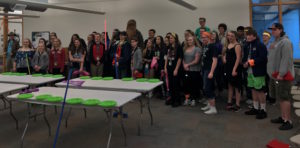
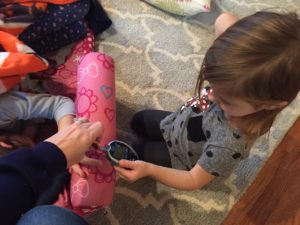















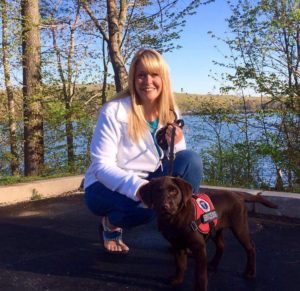 and I thought that it would be a great help to my friends if I could learn how to train their pet dogs to alert them in times of diabetes emergencies. After embarking on my quest to learn to train these service dogs, I realized that this was no easy feat, and the average pet dog wasn’t going to be able to perform in the way necessary to be a DAD. Despite the difficulty, I was fascinated by the process and took classes, read books, and tried to train some of my personal dogs. After a lot of trial-and-error, I finally successfully trained my first DAD.
and I thought that it would be a great help to my friends if I could learn how to train their pet dogs to alert them in times of diabetes emergencies. After embarking on my quest to learn to train these service dogs, I realized that this was no easy feat, and the average pet dog wasn’t going to be able to perform in the way necessary to be a DAD. Despite the difficulty, I was fascinated by the process and took classes, read books, and tried to train some of my personal dogs. After a lot of trial-and-error, I finally successfully trained my first DAD. Knowing that I am providing life-saving assistance and furry companionship to these T1D families has made the process of DAD training a great joy for me. Imagine my surprise when, several years into the process, my own son, Mac, was admitted to the hospital ICU in Diabetic Ketoacidosis (DKA) and diagnosed with type one diabetes. Although no one is ever prepared for a T1D diagnosis for their child, I had an army of friends and DAD client families there to support me. People are often surprised to hear that my DAD training began before T1D personally affected my family. I was dedicated before, but Mac’s diagnosis made me even more determined to train great DADs and help other families ease the burden of T1D.
Knowing that I am providing life-saving assistance and furry companionship to these T1D families has made the process of DAD training a great joy for me. Imagine my surprise when, several years into the process, my own son, Mac, was admitted to the hospital ICU in Diabetic Ketoacidosis (DKA) and diagnosed with type one diabetes. Although no one is ever prepared for a T1D diagnosis for their child, I had an army of friends and DAD client families there to support me. People are often surprised to hear that my DAD training began before T1D personally affected my family. I was dedicated before, but Mac’s diagnosis made me even more determined to train great DADs and help other families ease the burden of T1D.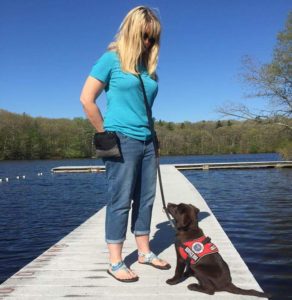 We are expecting lows after gym class, after a run, or when a meal has been skipped. We pay attention for signs of shakiness, dizziness, and sweating, as we diligently check our glucometers or keep a watchful eye on CGMs. But because of those sneaky lows that come at unexpected times, or for a person who has hypoglycemic unawareness, there is always a worry in the backs of our minds. A furry friend who acts as a safety net and another level of protection can ease these worries.
We are expecting lows after gym class, after a run, or when a meal has been skipped. We pay attention for signs of shakiness, dizziness, and sweating, as we diligently check our glucometers or keep a watchful eye on CGMs. But because of those sneaky lows that come at unexpected times, or for a person who has hypoglycemic unawareness, there is always a worry in the backs of our minds. A furry friend who acts as a safety net and another level of protection can ease these worries. The training for these dogs takes up to 2 years, and the costs average close to $20,000, but their ability to alert their person of life-threatening lows is priceless.
The training for these dogs takes up to 2 years, and the costs average close to $20,000, but their ability to alert their person of life-threatening lows is priceless. This summit includes an all-day event for teens, called Teen Central. Michigan State University MyT1D Hero researchers held a writer’s workshop during the Teen Central Event. These teens were asked to share their type 1 diabetes stories to be highlighted on this blog!
This summit includes an all-day event for teens, called Teen Central. Michigan State University MyT1D Hero researchers held a writer’s workshop during the Teen Central Event. These teens were asked to share their type 1 diabetes stories to be highlighted on this blog! It makes it very difficult for teens to do what we like to do. For example: eating brownies. People think that we aren’t allowed to have sugar and that we aren’t allowed to eat food because pretty much everything has carbs. Some people try to be nice and get you sugar free chocolate but chocolate should melt when warm or it’s not edible and I really just want the brownie. I wish that people would take the time to listen to what you have to say instead of just assuming what you can and can’t have. You can have anything that you want as long as you correct for it. That’s what angers me is that people don’t take the time to listen to what you have to say and think they know what’s best for you.
It makes it very difficult for teens to do what we like to do. For example: eating brownies. People think that we aren’t allowed to have sugar and that we aren’t allowed to eat food because pretty much everything has carbs. Some people try to be nice and get you sugar free chocolate but chocolate should melt when warm or it’s not edible and I really just want the brownie. I wish that people would take the time to listen to what you have to say instead of just assuming what you can and can’t have. You can have anything that you want as long as you correct for it. That’s what angers me is that people don’t take the time to listen to what you have to say and think they know what’s best for you. For me, low blood sugars are an extremely rare problem. I eat pretty healthy for an almost 14-year-old girl, I exercise pretty well, I bolus for all my carbs, and do correction boluses for any numbers over my target range. I get lots of activity; taking care of two horses every day, running with my dog, and in the summer I ride multiple horses almost every day at a training farm, so I’m in good shape. Yet, my numbers are still high. I recently switched to a pump, which has helped, but not as much as I had hoped. Every day I still struggle to keep my numbers down. The point I’m trying to make is that everyone has struggles with their diabetes. Don’t say, “Well you’re supposed to do this”, or, “You shouldn’t do that.” We are all so different, and I think this is something the world needs to realize. Not only the friends, families, and team-members of people with type 1 diabetes, but the people with diabetes themselves. Don’t look down on others because of how they’re treating their diabetes, instead learn from it. How they are taking care of their numbers may not work for you, but still learn from it. Learn how they work differently than you do. If you participate in track and field, you talk to other people (coaches, team-mates, ect.) about how they are successful in their events, and it helps you become a better athlete. Do the same with your diabetes. Share stories and openly talk with others about your experiences. As T1D patients, we’re all stuck in the same boat, and all the questions, worry, uncertainty, pressure, and mental and physical pains that come with this disease try to sink that boat. But we can rise above it much easier if we all hold each other up.
For me, low blood sugars are an extremely rare problem. I eat pretty healthy for an almost 14-year-old girl, I exercise pretty well, I bolus for all my carbs, and do correction boluses for any numbers over my target range. I get lots of activity; taking care of two horses every day, running with my dog, and in the summer I ride multiple horses almost every day at a training farm, so I’m in good shape. Yet, my numbers are still high. I recently switched to a pump, which has helped, but not as much as I had hoped. Every day I still struggle to keep my numbers down. The point I’m trying to make is that everyone has struggles with their diabetes. Don’t say, “Well you’re supposed to do this”, or, “You shouldn’t do that.” We are all so different, and I think this is something the world needs to realize. Not only the friends, families, and team-members of people with type 1 diabetes, but the people with diabetes themselves. Don’t look down on others because of how they’re treating their diabetes, instead learn from it. How they are taking care of their numbers may not work for you, but still learn from it. Learn how they work differently than you do. If you participate in track and field, you talk to other people (coaches, team-mates, ect.) about how they are successful in their events, and it helps you become a better athlete. Do the same with your diabetes. Share stories and openly talk with others about your experiences. As T1D patients, we’re all stuck in the same boat, and all the questions, worry, uncertainty, pressure, and mental and physical pains that come with this disease try to sink that boat. But we can rise above it much easier if we all hold each other up.
 was very thin, easily upset, and eating and drinking an extreme amount. My mom asked me to take a test, telling me to pee on a stick, which seemed very strange, but I did it.
was very thin, easily upset, and eating and drinking an extreme amount. My mom asked me to take a test, telling me to pee on a stick, which seemed very strange, but I did it. responsibility that very few people will ever endure. Yet, despite the struggles, hardships and downfalls, I have learned how to be independent and take care of my body. I have been able to understand the science behind my diabetes and how my choices impact my future. This has ultimately helped me develop a healthier lifestyle. I have learned what love is, by the patience and support my family has shown me. Being diagnosed with diabetes has caused me take on many responsibilities and helped me to gain understanding and maturity different than many kids my age. Diabetes has caused me to look at the bigger picture of life, to find silver linings, and to give everyone grace with their own personal struggles. My diabetes has even impacted my future, influencing the type of career I intend to pursue. I will be majoring in biochemistry to train for a career in technological advancements and research on diabetes to help others facing similar hardships.
responsibility that very few people will ever endure. Yet, despite the struggles, hardships and downfalls, I have learned how to be independent and take care of my body. I have been able to understand the science behind my diabetes and how my choices impact my future. This has ultimately helped me develop a healthier lifestyle. I have learned what love is, by the patience and support my family has shown me. Being diagnosed with diabetes has caused me take on many responsibilities and helped me to gain understanding and maturity different than many kids my age. Diabetes has caused me to look at the bigger picture of life, to find silver linings, and to give everyone grace with their own personal struggles. My diabetes has even impacted my future, influencing the type of career I intend to pursue. I will be majoring in biochemistry to train for a career in technological advancements and research on diabetes to help others facing similar hardships.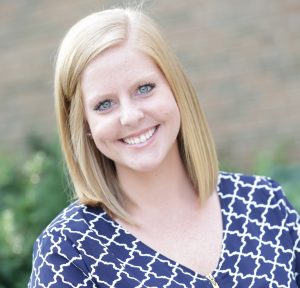
 In focus groups conducted by the MSU team, parents have observed that although there are many good Facebook support groups, one that is for Michigan parents only would be helpful. One parent suggested how helpful it could be if they were traveling for sports to another part of the state and had forgotten something they needed for management, they could simply go into this group and see if anyone in the area could help them out. Every time we share a load, the load becomes lighter.
In focus groups conducted by the MSU team, parents have observed that although there are many good Facebook support groups, one that is for Michigan parents only would be helpful. One parent suggested how helpful it could be if they were traveling for sports to another part of the state and had forgotten something they needed for management, they could simply go into this group and see if anyone in the area could help them out. Every time we share a load, the load becomes lighter. Summary written by: Dr. Michael Wood, MD, Associate Professor of Pediatrics at University of Michigan Medical School and Clinical Director of the Pediatric Diabetes Program
Summary written by: Dr. Michael Wood, MD, Associate Professor of Pediatrics at University of Michigan Medical School and Clinical Director of the Pediatric Diabetes Program